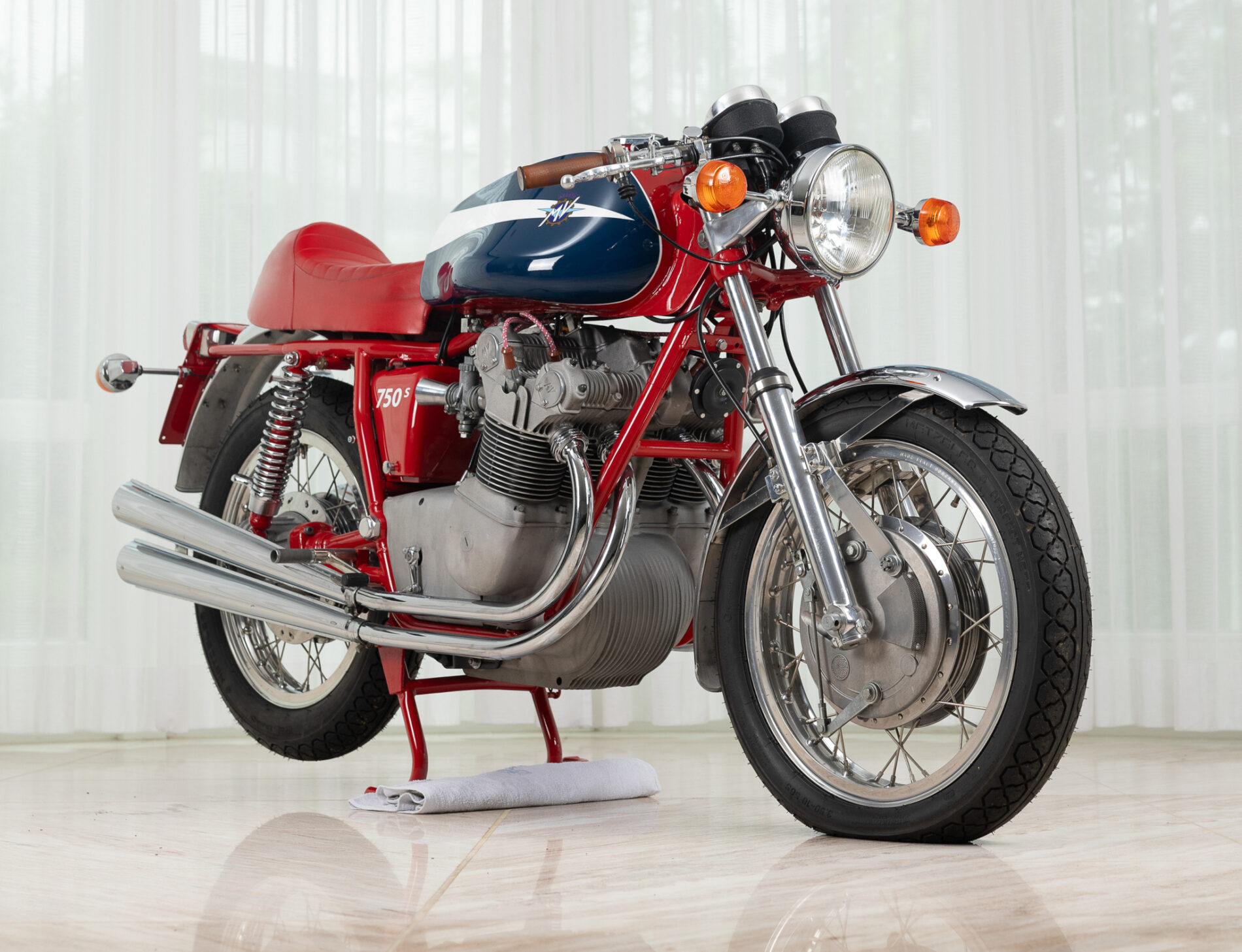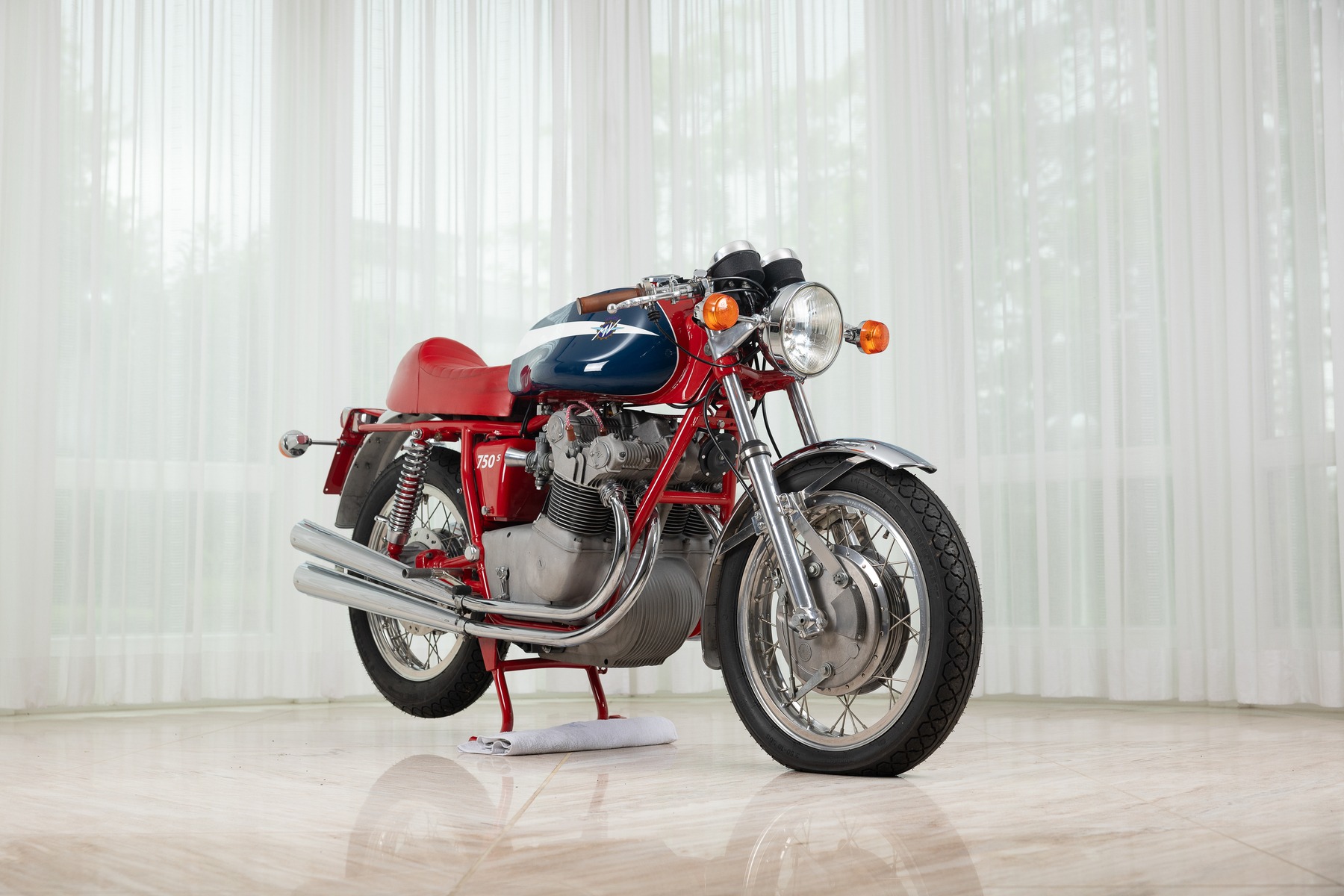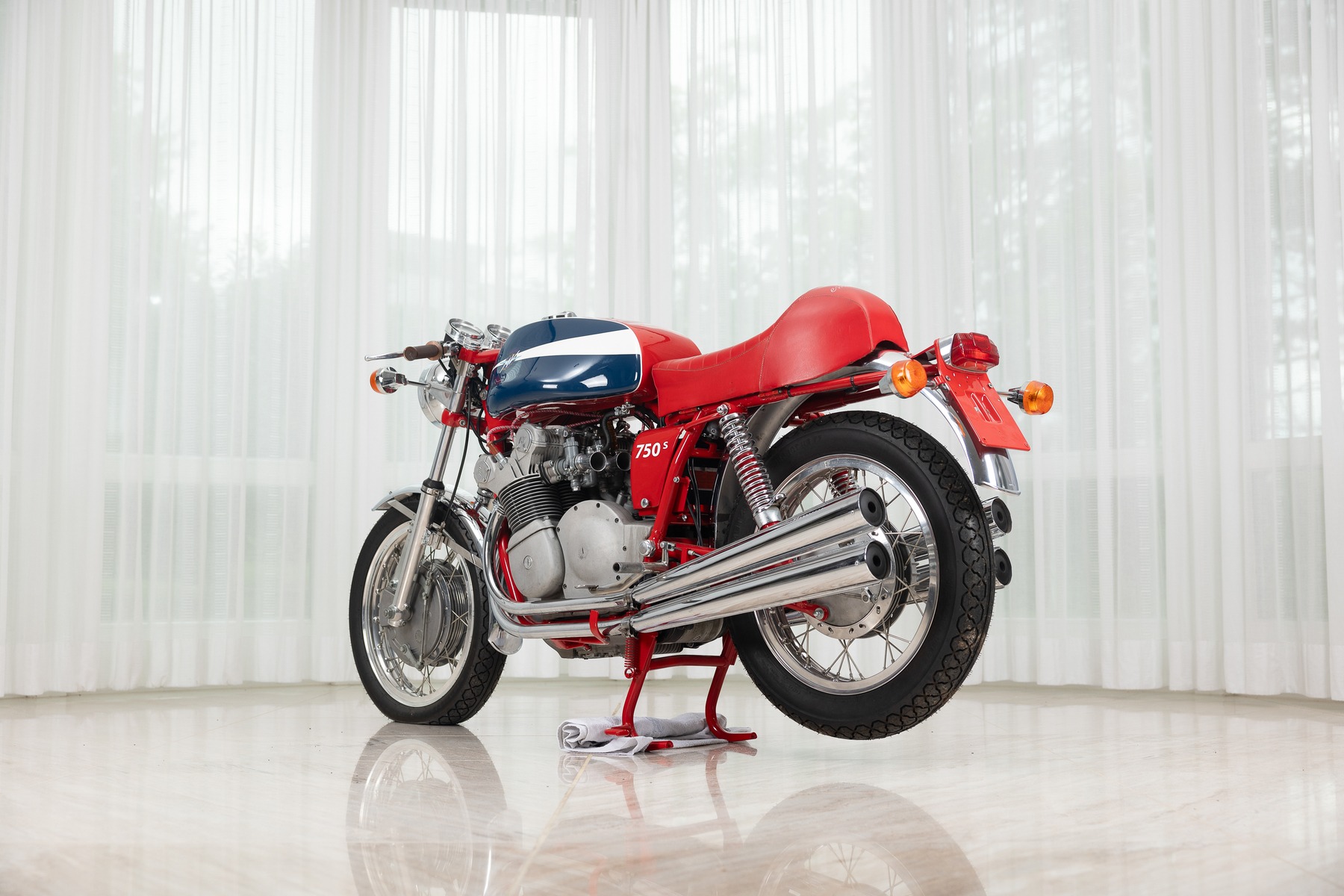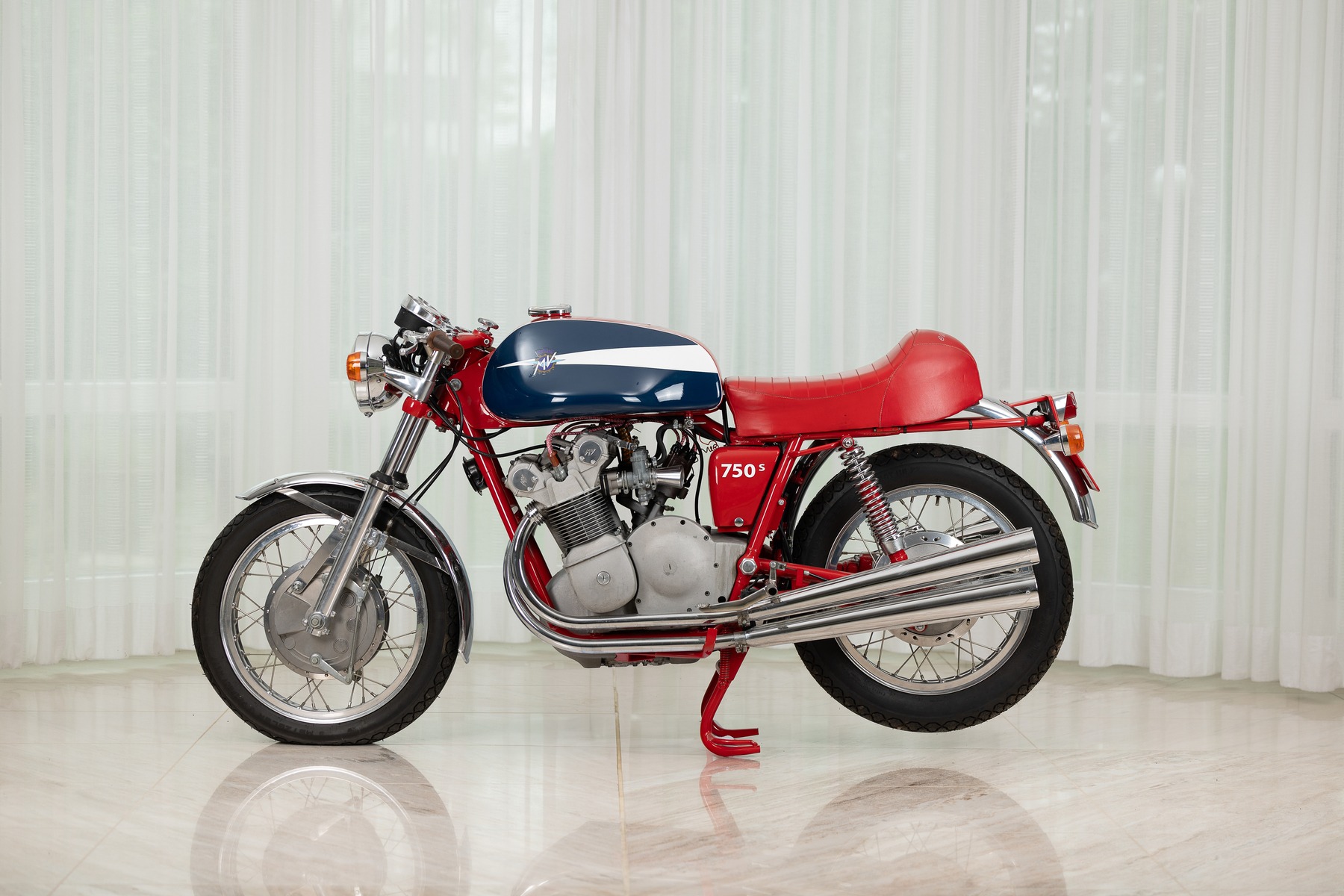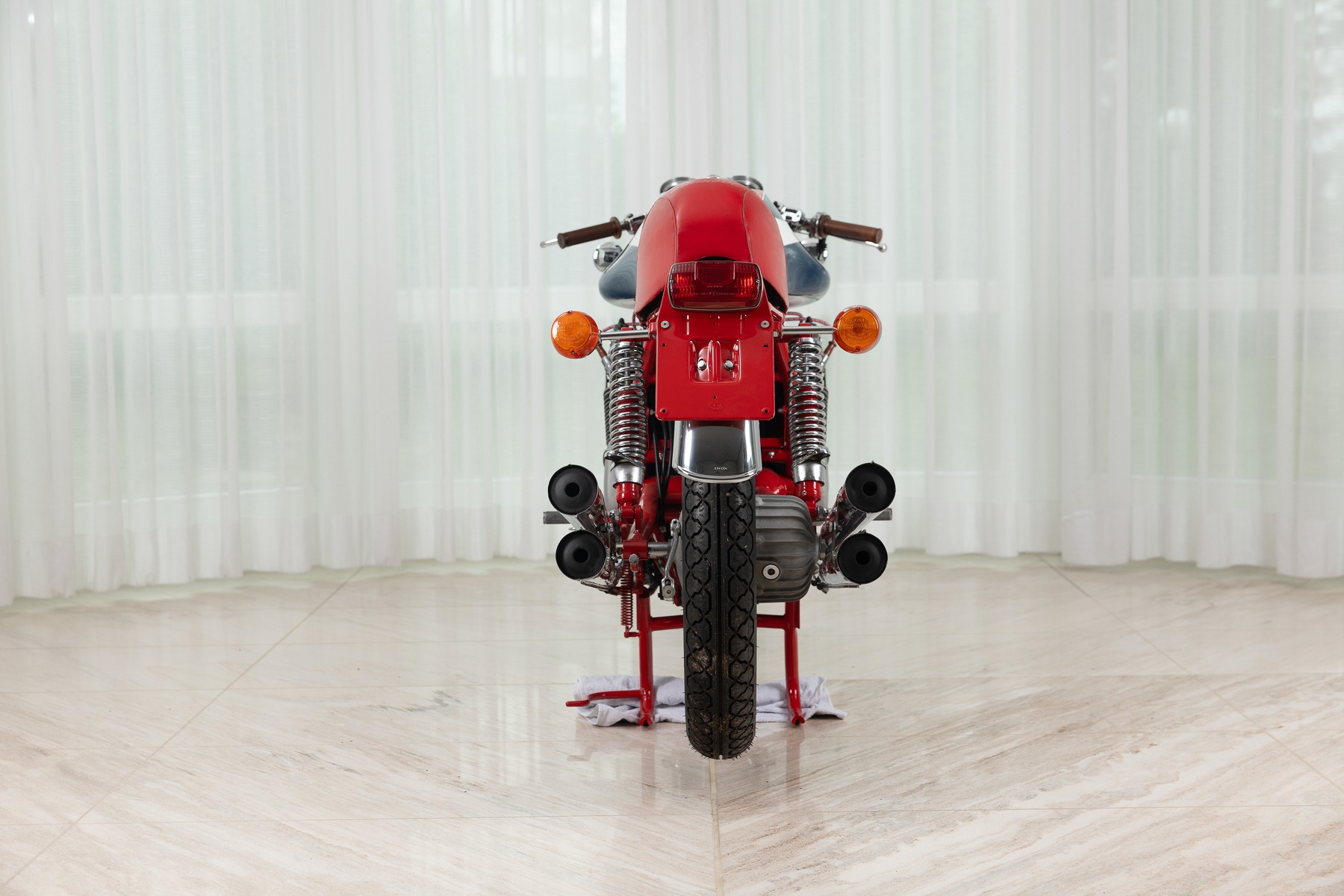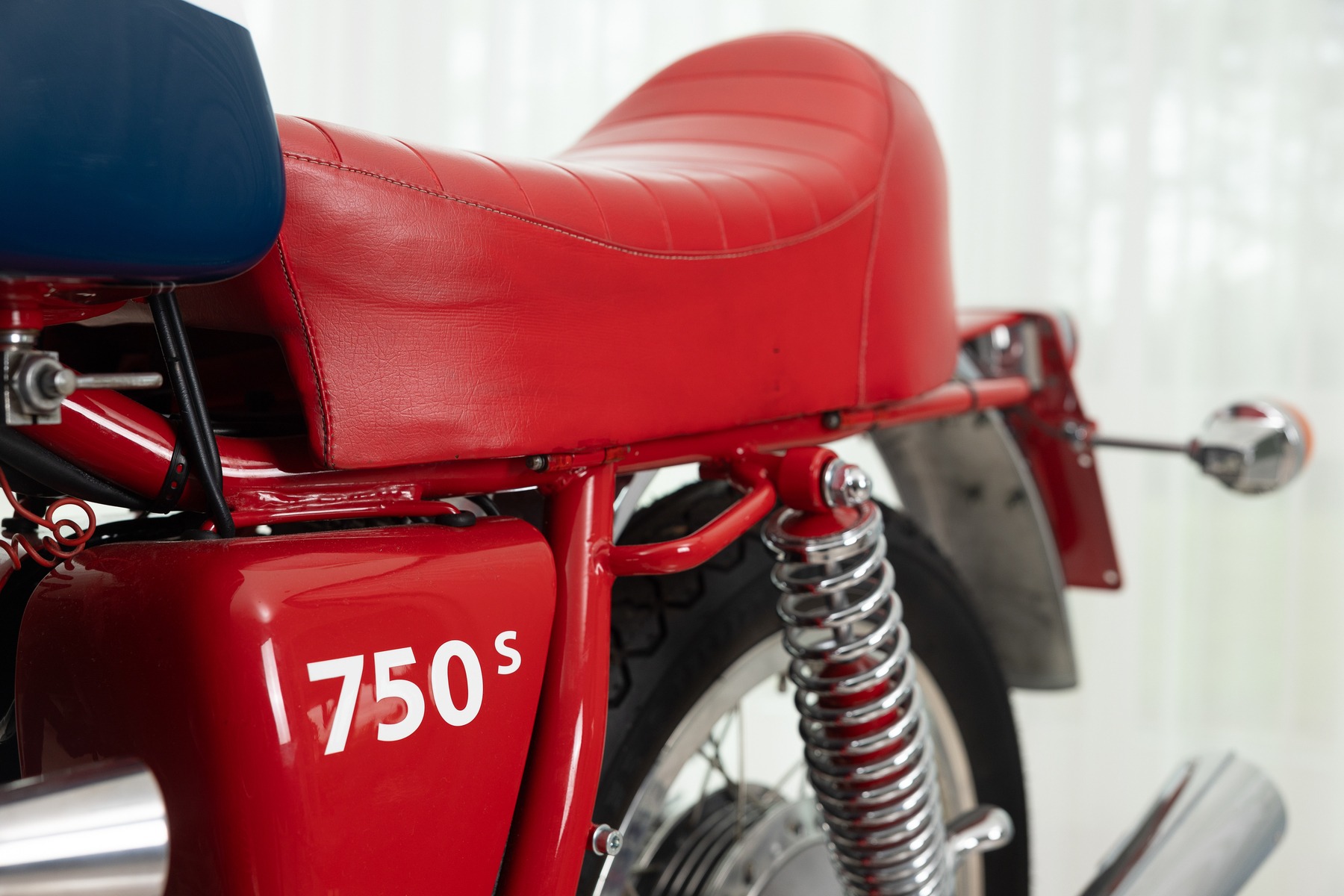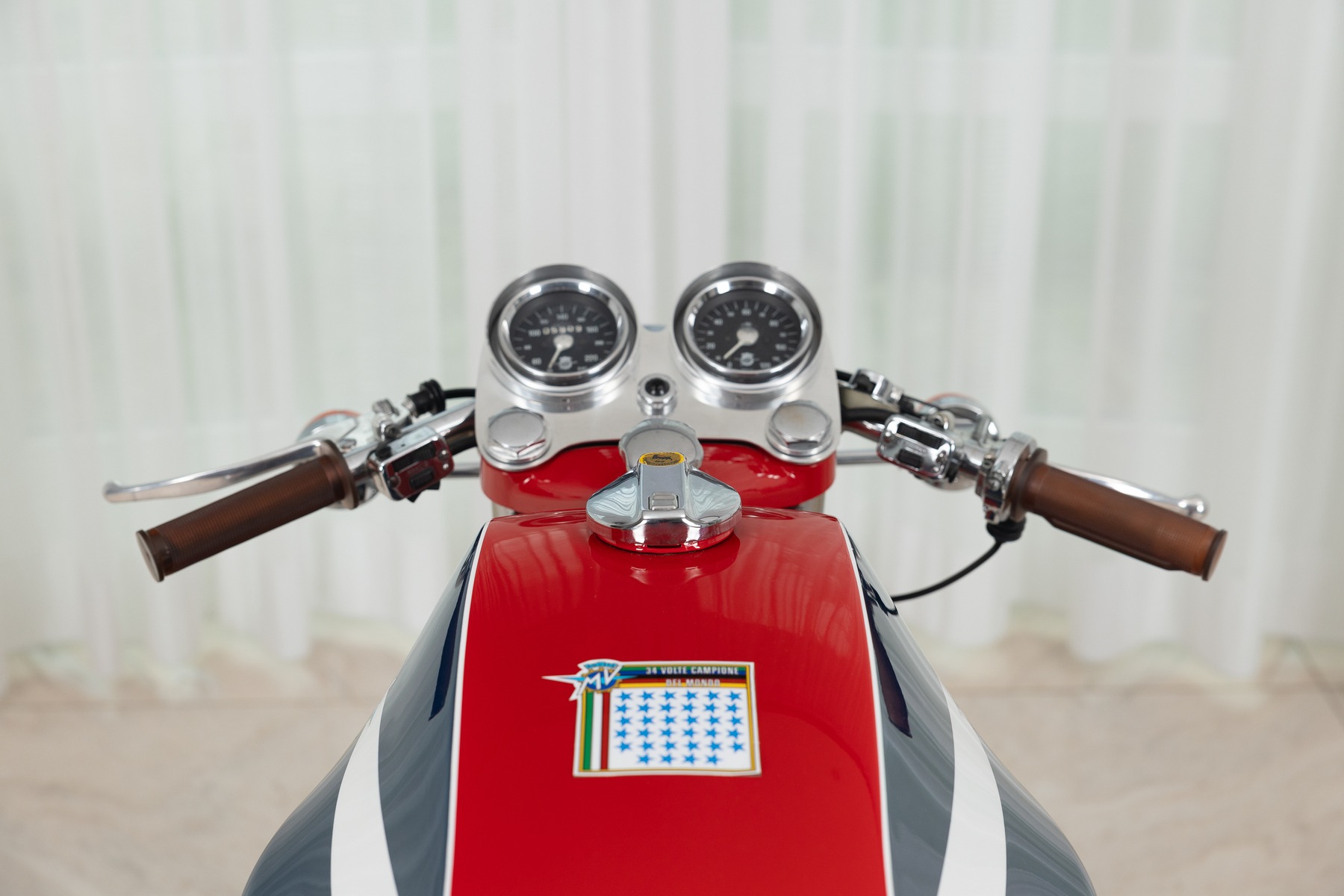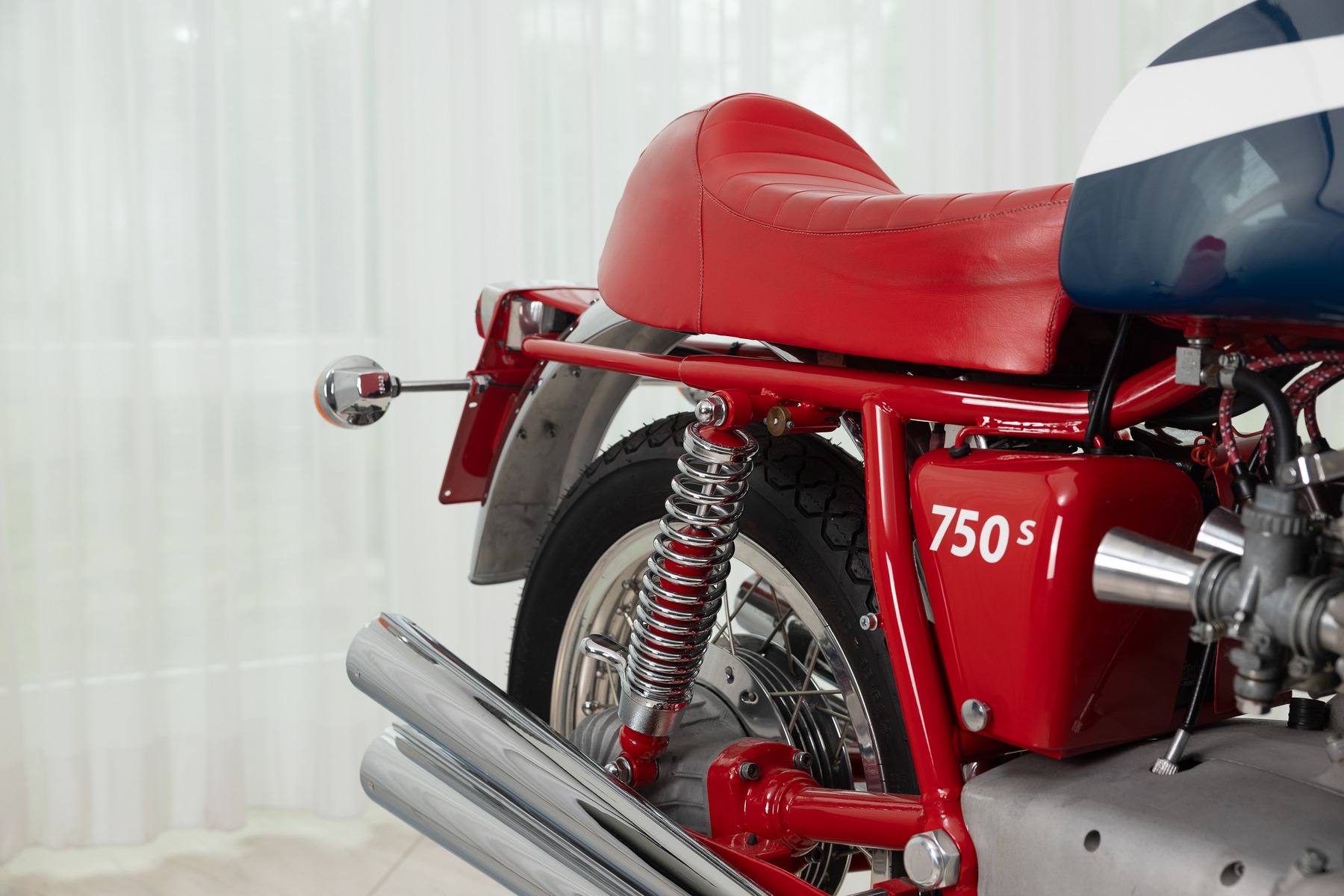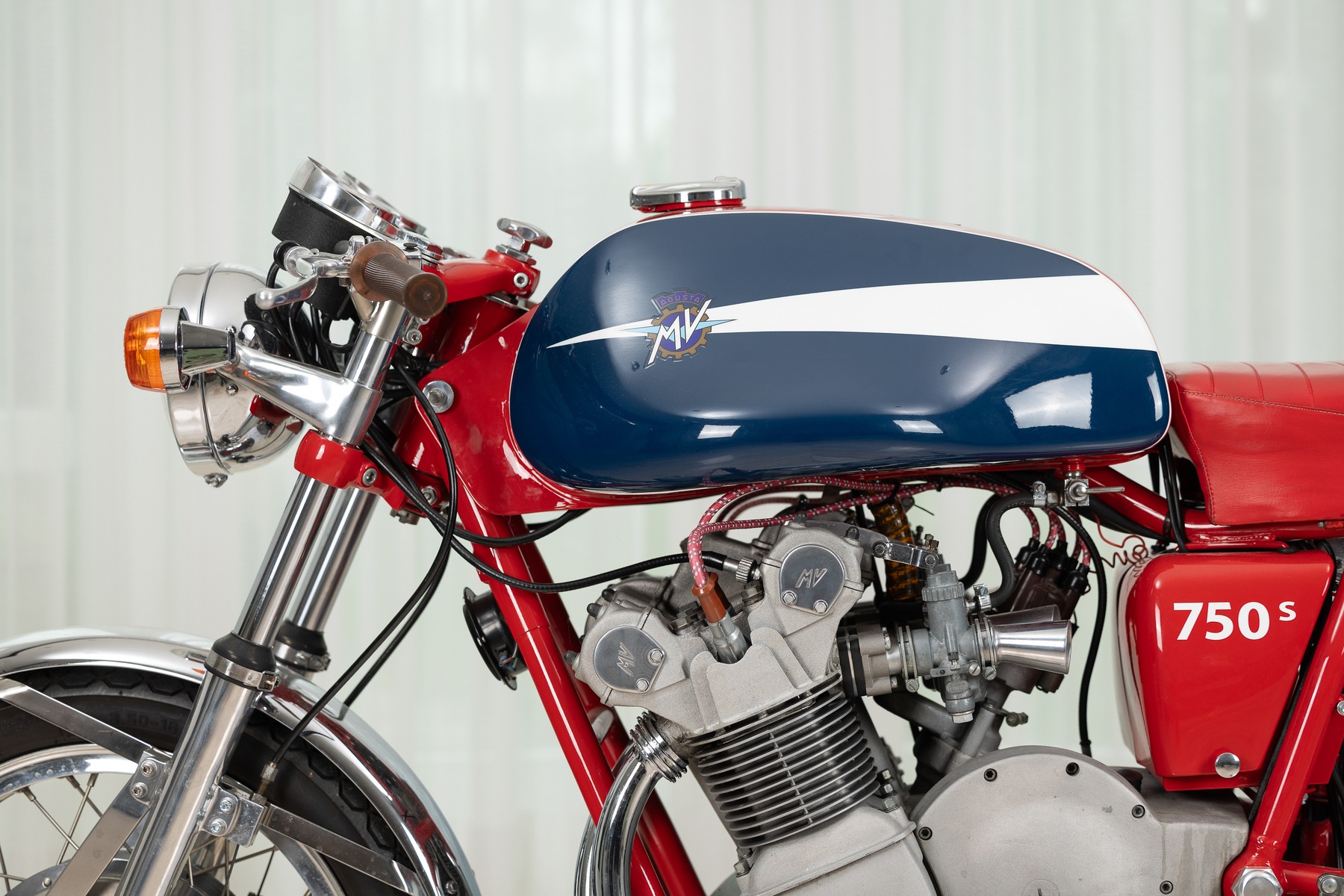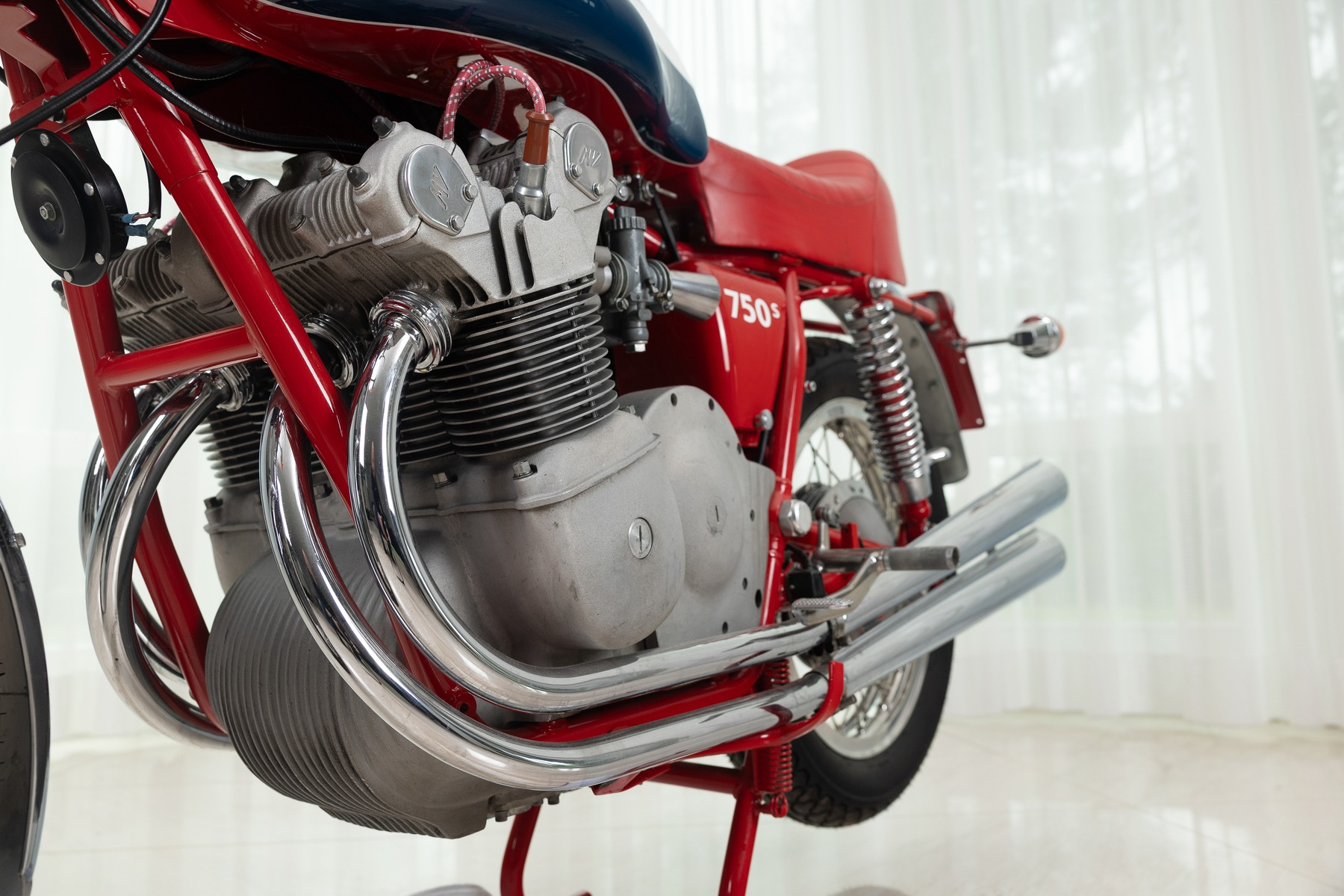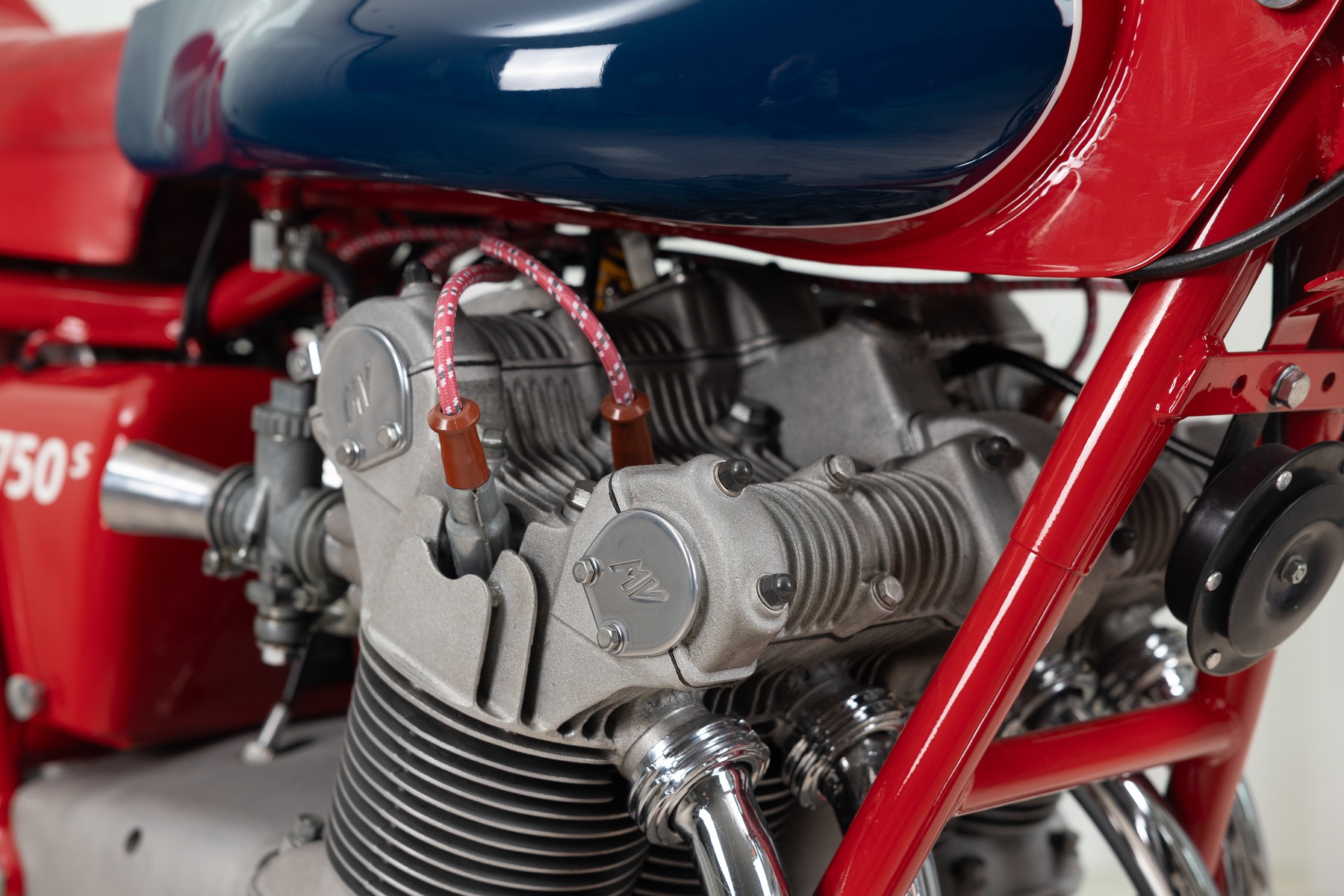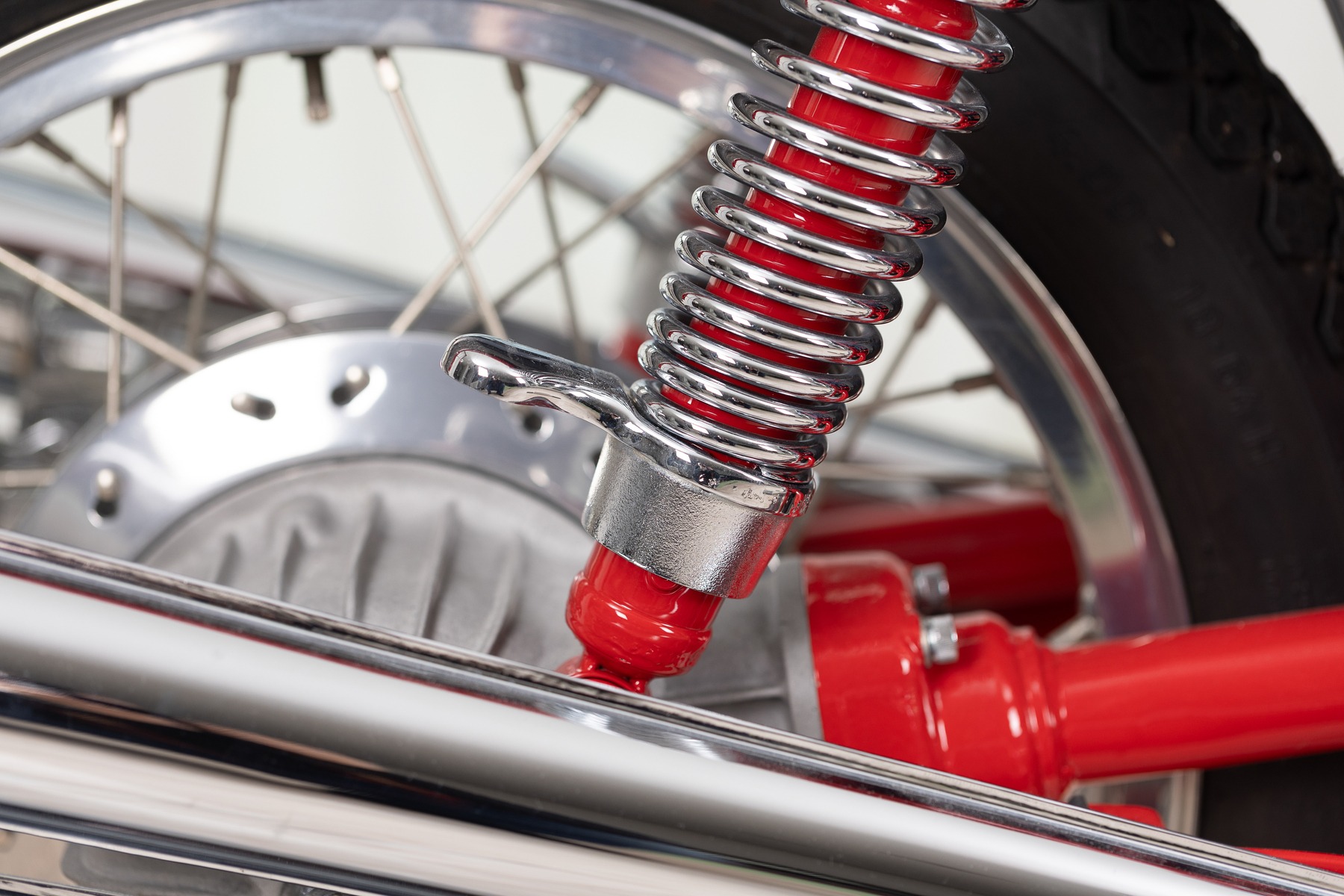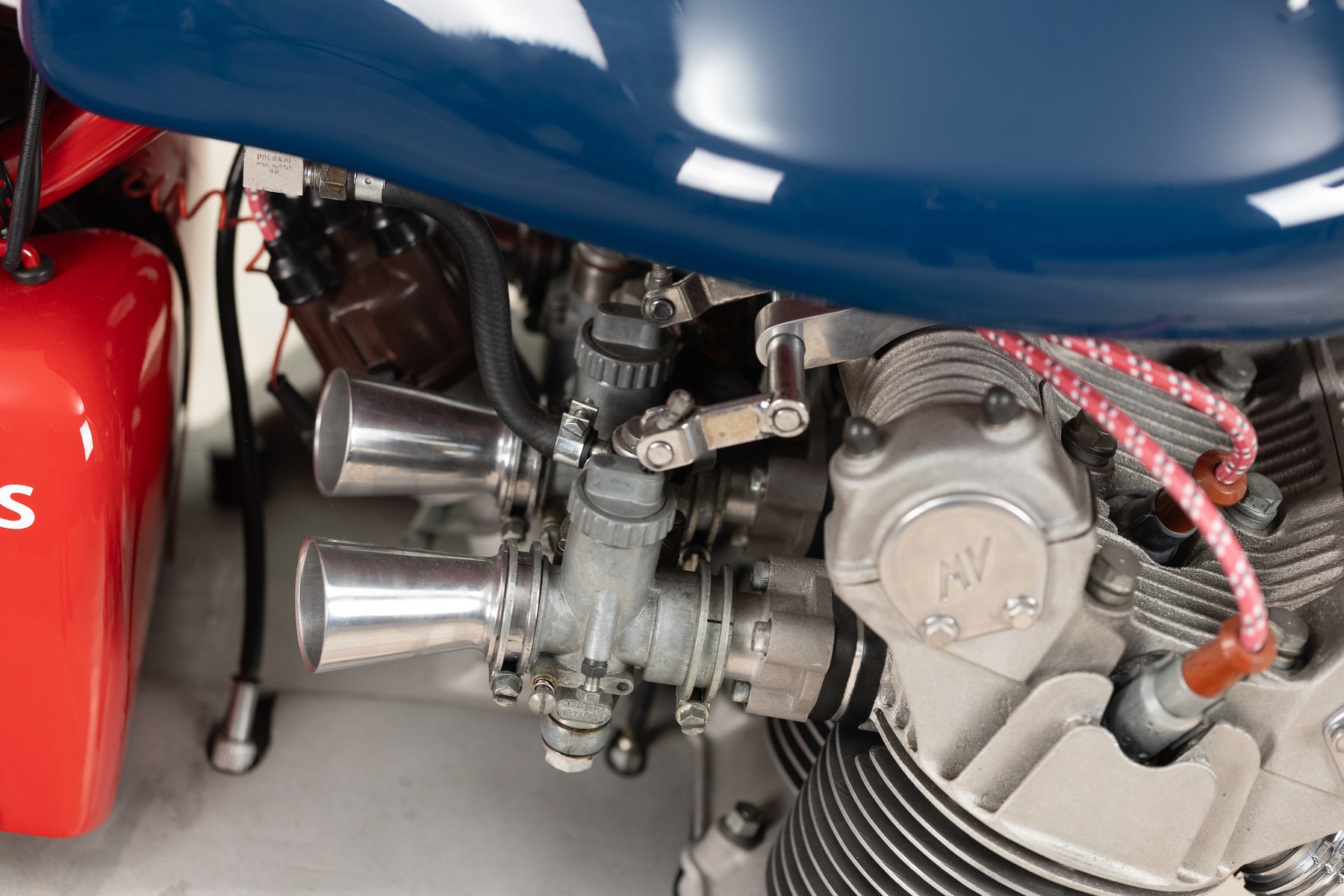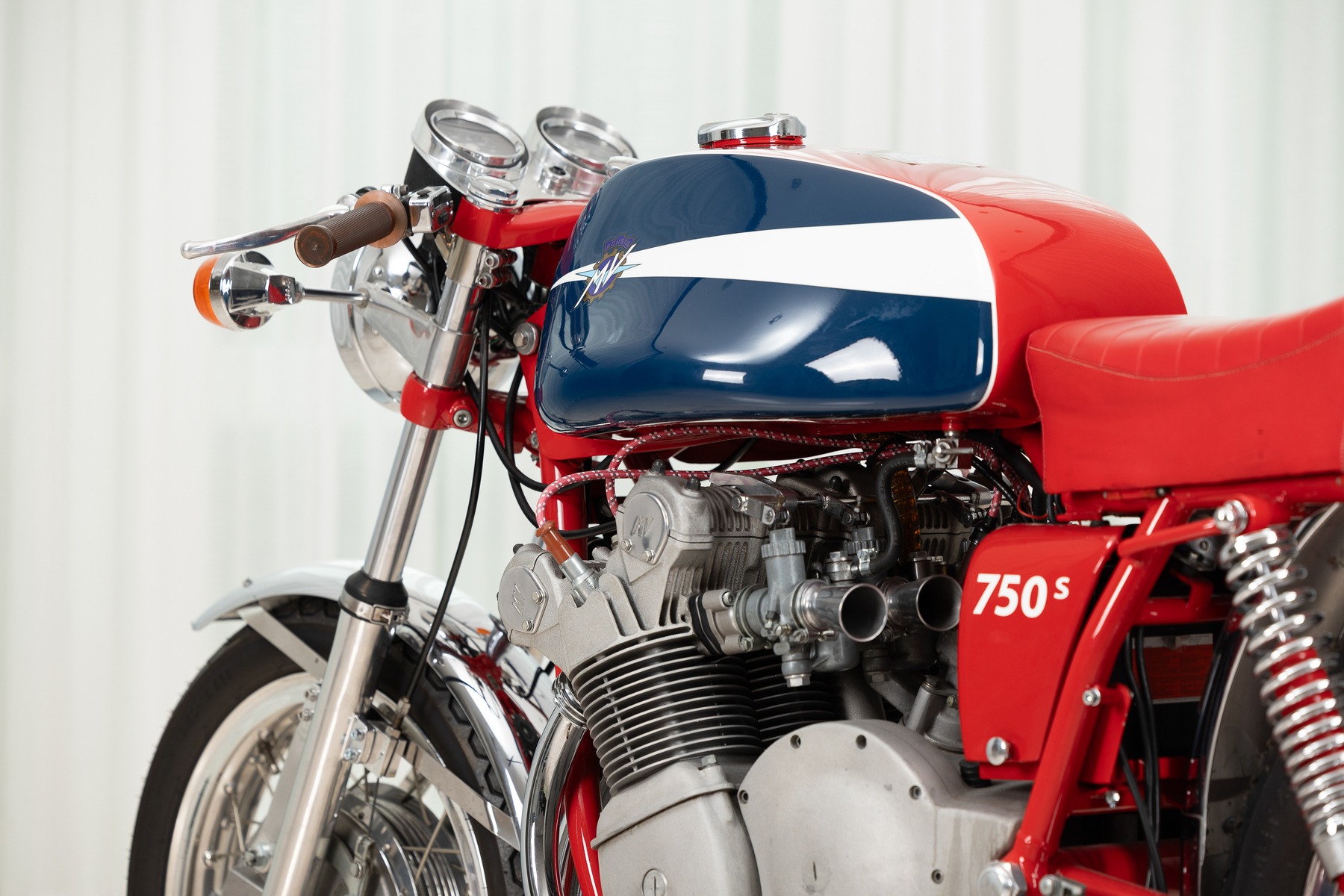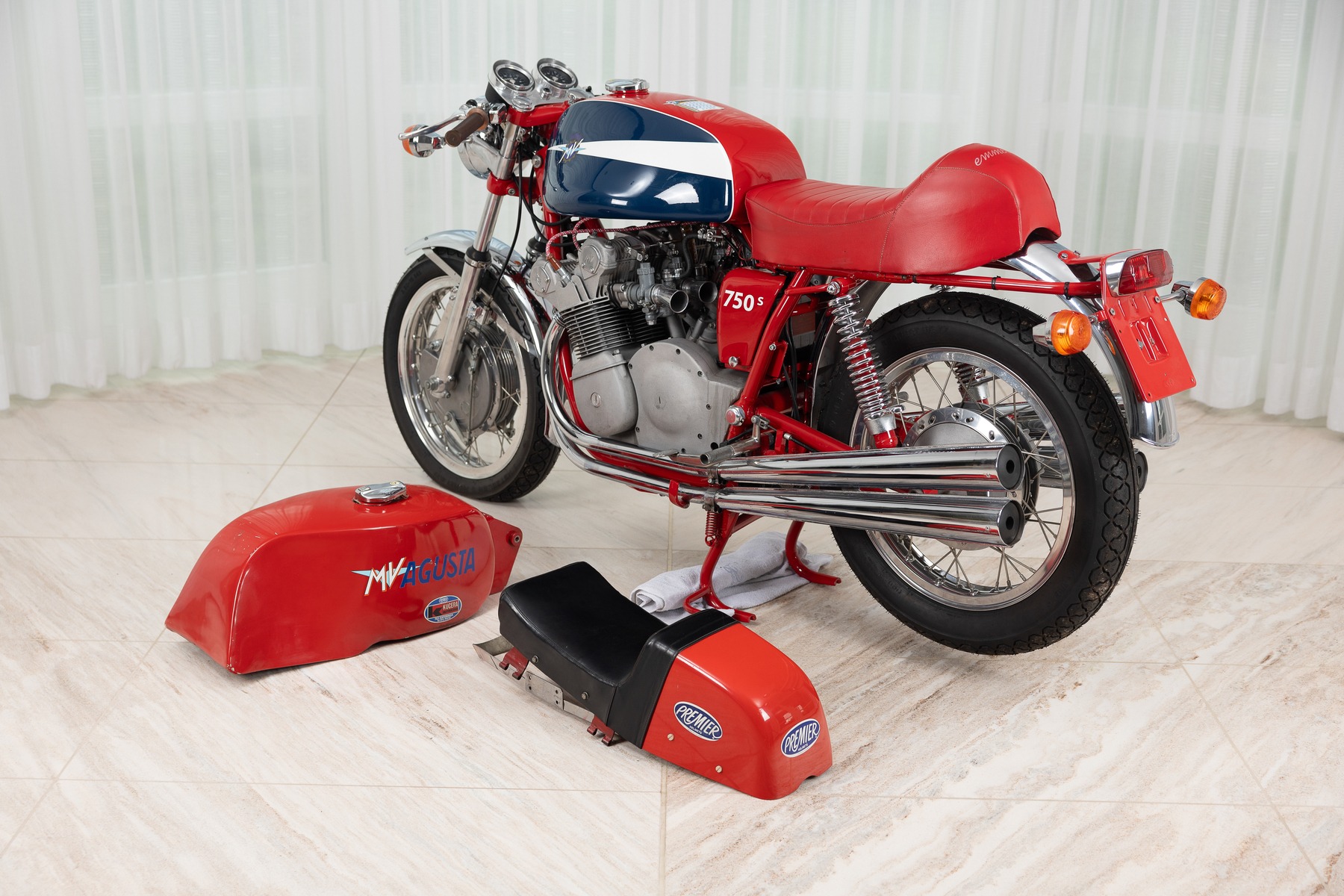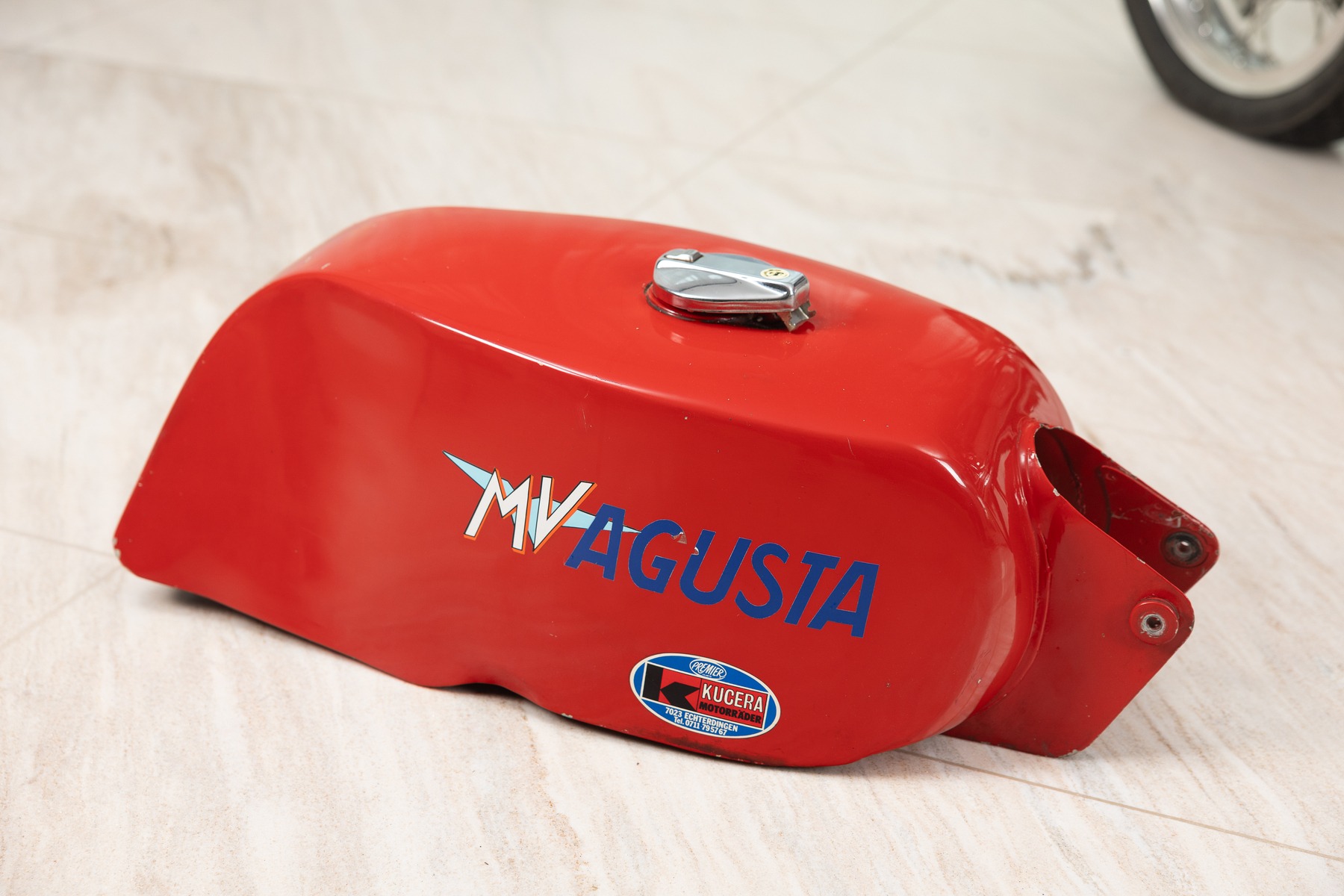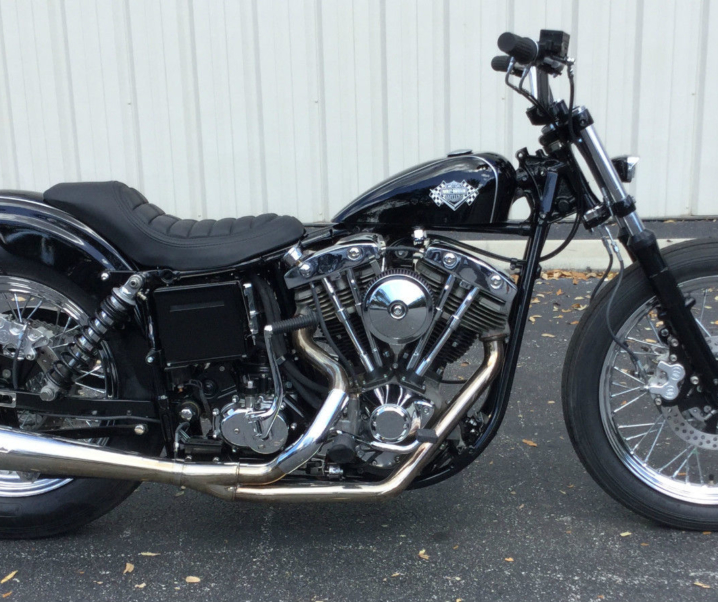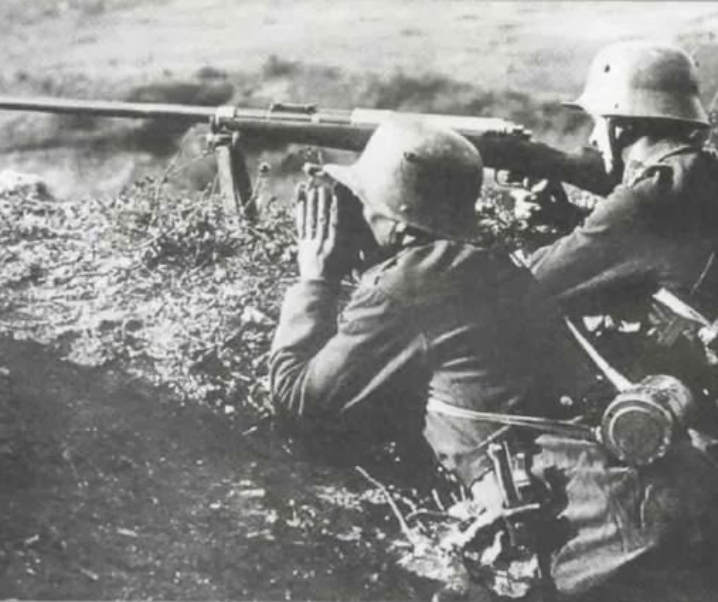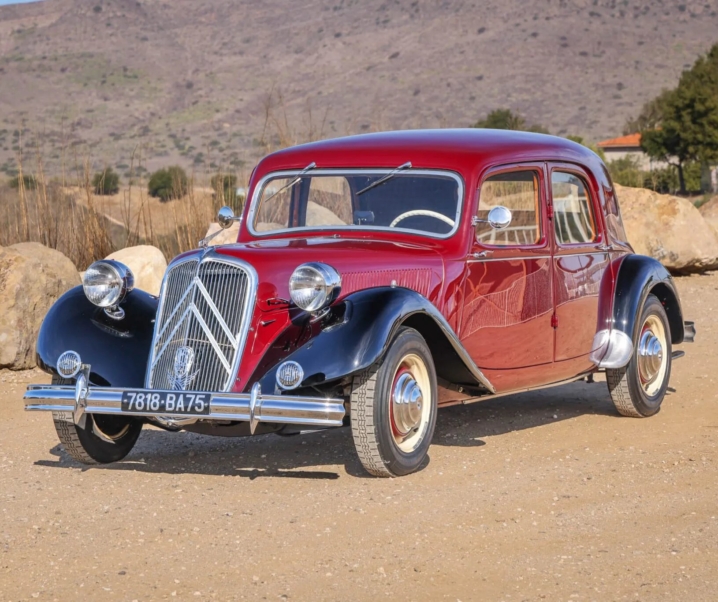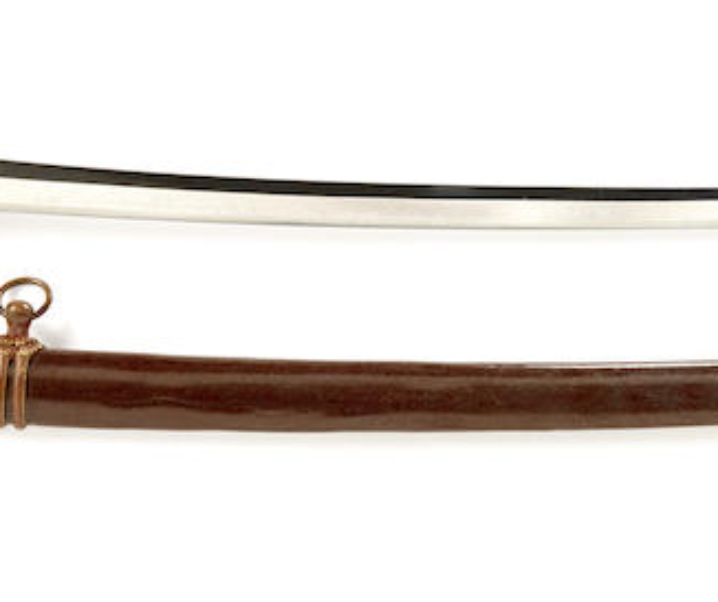The MV Agusta 750 S was a beautifully made and brilliantly performing high-performance sports motorcycle. Powered by a 72 bhp DOHC inline four cylinder 743.3 cc engine mounted transversely and equipped with a five speed cassette type gearbox this bike was an enthusiasts dream machine.
Capable of 200 km/hr this motorcycle was indeed capable of giving its owner all the adrenaline pumping enjoyment that he or she could desire.
Fast Facts
- Agusta began as an aircraft maker and continued as such up until the end of the Second World War.
- After 1945 it was necessary for Agusta to cease aircraft making and so they decided to begin designing and making machines for two-wheel flying instead – i.e. motorcycles.
- MV Agusta began creating racing motorcycles in 1946 beginning with their MV 98. This began a long and distinguished racing career for them.
- Agusta resumed aircraft making and has become a well known helicopter manufacturer.
- The MV Agusta 750 S was created as a sports motorcycle and produced exemplary performance, the bike being capable of a top speed of 200 km/hr.
- An MV Agusta 750 S is coming up for sale on July 27, 2024, by RM Sotheby’s.
In the Beginning: Flying Machines with Wings and Rotors
Count Giovanni Agusta was an adventurous man who embraced flying with a passion. He flew his first aircraft in 1907, almost four years after the Wright brothers made their historic flight near Kitty Hawk in North Carolina in December 1903.
Count Agusta desired to become a maker of aircraft and in 1923 he established an aircraft making business called Costruzioni Aeronautiche Giovanni Agusta S.A. at Cascina Costa, Samarate, Northern Italy. His joy in this was to be short lived however as he passed away in 1927.
Count Agusta’s legacy lived on however and the business interests were taken over by his wife Giuseppina and his sons, Domenico, Vincenzo, Mario and Corrado.
This was the period of Italian history when the country was ruled by a fascist government that was gearing up for wars, and so this was a period when demand for such things as aircraft was at a high level.
That being said Giuseppina and her sons, notably Domenico, wanted to diversify the business and so the decision was made to begin manufacture of motorcycles while keeping the aircraft business in operation also.
The Second World War was to prove the wisdom of this decision because at the end of the war in 1945 Italy was forbidden from making aircraft.
This ban lasted until 1952 when Agusta were able to begin building helicopters designed by other manufacturers under license. They made helicopters for Bell, Sikorsky, Boeing and McDonnell Douglas, and then in the 1960’s began to develop their own designs.
Agusta nowadays is an established helicopter maker and you can find their website if you click here.
Flying Machines on Two Wheels
At the end of the Second World War Domenico Agusta was able to make a proper start in the creation of MV Agusta as a maker of motorcycles. The company had been working on engine designs during the 1930’s but that initial design work had to wait until 1945 before it could be brought to completion.
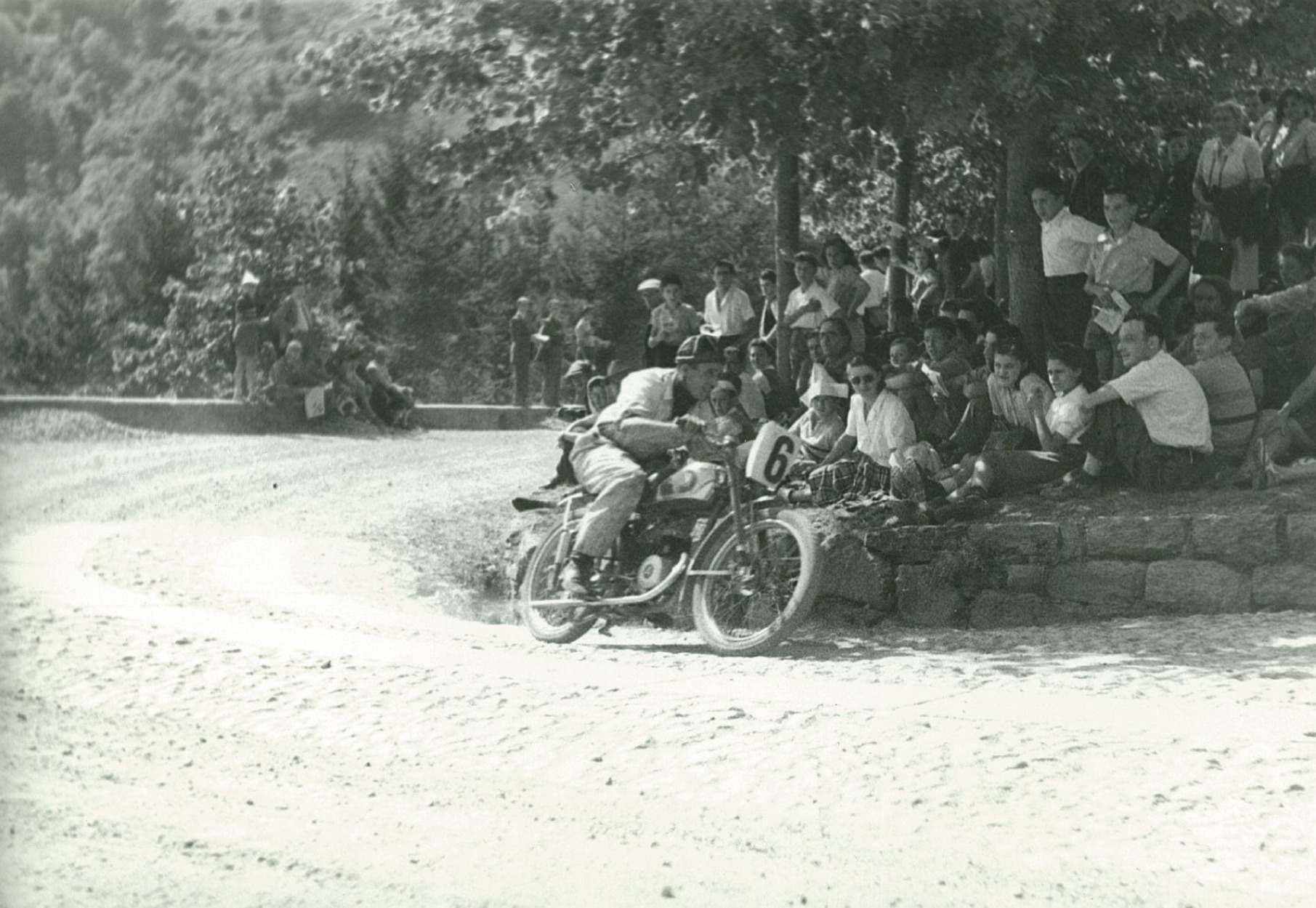
The new motorcycle making company was called Meccanica Verghera S.r.l., and its first motorcycle was a utilitarian model with a 98cc two-stroke engine and two speed gearbox. the bike had girder front forks as was the norm at that time, along with no rear suspension, and a spring suspended saddle to keep the rider’s rear end protected from the worst that Italy’s post-war roads could deliver.
Meccanica Verghera were originally going to call this motorcycle the Vespa 98, but were beaten to the commercial use of the Vespa name by Piaggio, so the new model was called the MV98 instead.
Sales of the MV98 began in 1946 and the bike was offered in two versions: the Economica, which was the economical base model with the two speed gearbox, and the rather more luxurious Turismo which had a three speed gearbox and rear suspension.
Sales of these bikes produced income for MV Agusta and they used that income to get into the sport of motorcycle racing: just as the likes of Enzo Ferrari got into the sport of motor racing to build his sports car business, so MV Agusta did to build up their business as a maker of racing and road going motorcycles.
MV Agusta motorcycles underwent progressive development over the course of the next four years and in 1950 Dr. Pietro Remor created what was to become a world motorcycle first – an inline four cylinder DOHC cam racing engine which was set transversely at thirty degrees in the frame of a prototype bike called the 500 Tourismo.
The 500 Tourismo did not go into production at that time, if it had it would have been the first production motorcycle to be fitted with a transverse four cylinder inline engine, but that honour was to wait until 1966 – two decades after the first MV Agusta had entered production.
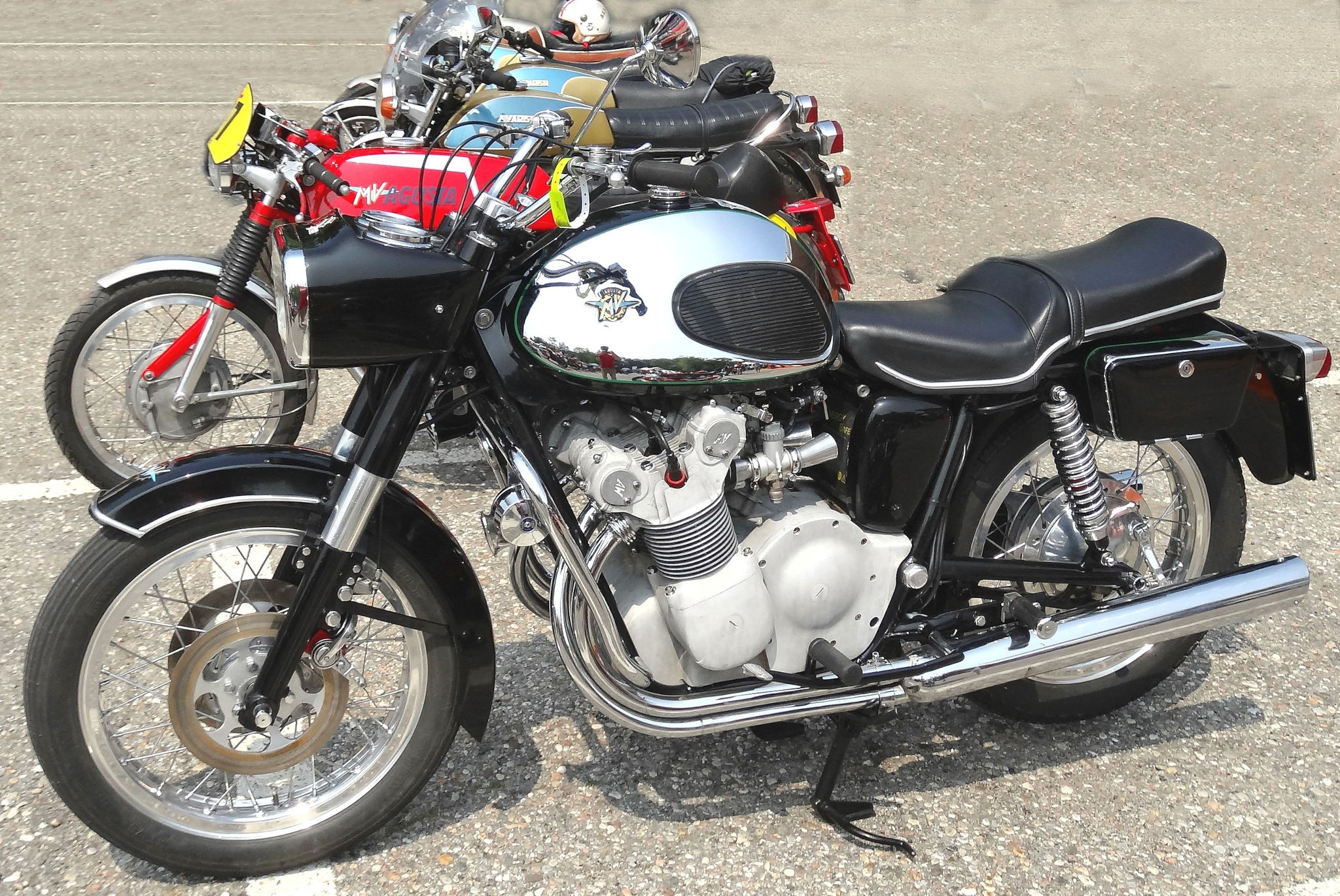
This new motorcycle was the MV Agusta 600 which made its debut at the Milan Motorcycle Show in November 1965.
The MV Agusta 600 became the first production motorcycle with a transverse mounted DOHC inline transverse mounted four cylinder engine. That engine was of 592 cc (36 cu. in.) capacity and it breathed through four 24 mm Dell’Orto carburetors. This engine produced 52 bhp @ 8,000 rpm and gave the bike a top speed of 115 mph (185 km/hr).
Its transmission comprised a five speed cassette gearbox and shaft drive. It was a very sophisticated machine, perhaps best considered as being like a motorcycle equivalent of a Ferrari sports car.
In appearance the MV Agusta 600 can only be described as “macho”, having a sort of no-nonsense functional look that might typically appeal to a guy looking for a technically advanced rugged looking motorcycle: and it delivered that “macho” attractiveness on steroids. That being said it was, like MV Agusta bikes generally, expensive: the sort of expensive that makes your eyes water as you reach for your cheque book.
Sales of the MV Agusta 600 proved to be disappointing despite the design being brilliant and so it only remained in production for four years up until 1970, at which time MV Agusta had reconsidered the motorcycle and come up with a new idea that they believed would sell well.
The MV Agusta 750 S
The year production of the MV Agusta 600 ceased a new motorcycle model, based on the 600 but with significant differences, was introduced.
Agusta seem to have decided that a touring motorcycle such as the 600 was not what MV Agusta customers really wanted. So the new model was to be an uncompromising sports motorcycle with eye-popping performance and handling. In short, this was to be a motorcycle that the owner would not tell his mother, or wife, that he was riding.
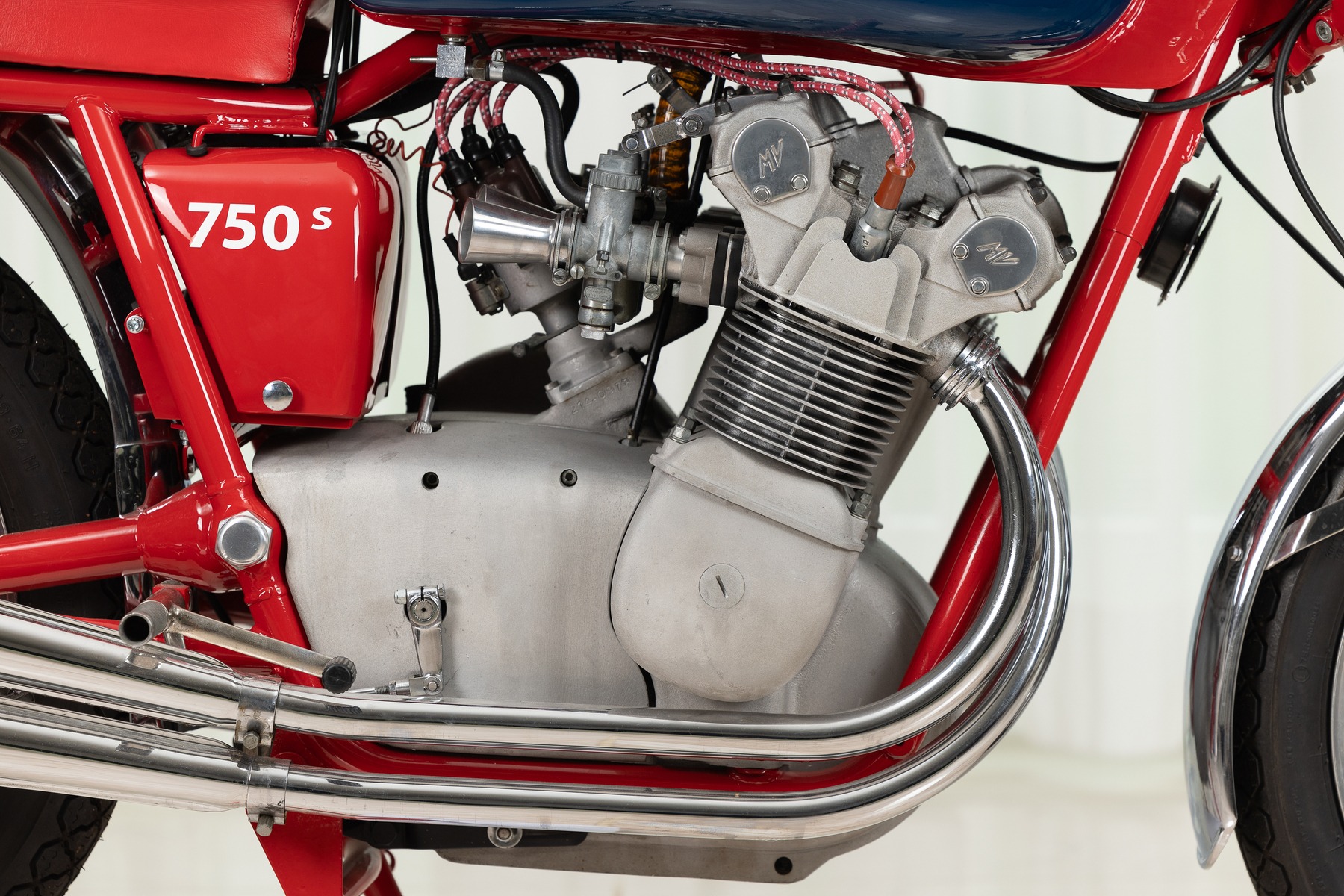
The engine capacity was increased to 743.3 cc (45 cu. in.) but still breathed through four 24 mm Dell’Orto carburettors and churned out a substantial 72 bhp @ 9,200 rpm.
The double overhead camshafts were gear driven and the starter motor was an interesting dual function unit that also served as the alternator, thus saving weight and complexity. This unit was belt driven.
The transmission was, like the 600, a five speed cassette type, with shaft drive via a spiral bevel gear angle drive: the gear-shift lever being on the right side.
This gave the bike a top speed of 120 mph (200 km/hr), the sort of speed that could result in the rider breaking George Brough’s record he set at Brooklands – Brough came off his bike while doing full speed and slid down the tarmac on his leathers protected bottom, setting an unofficial record for the longest backside slide in the history of motorcycling.
The half-duplex cradle frame of the MV Agusta 750 S was a significant improvement over its predecessor and featured Ceriani Teledraulic forks at the front and at the rear a swingarm with BREV hydraulic dampers.
The brakes of the 750 S were 230 x 30 mm Duo-duplex drums at the front and a 200 mm drum brake at the rear, all cable operated.
Tyres were 3.50 x 18 at the front and 4.00 x 18 at the rear.
Fuel tank capacity was a quite generous 24 litres (6.6 US gallons/5.5 Imperial gallons) and the bike weighed in at 245 kg dry. Seat height was 800 mm.
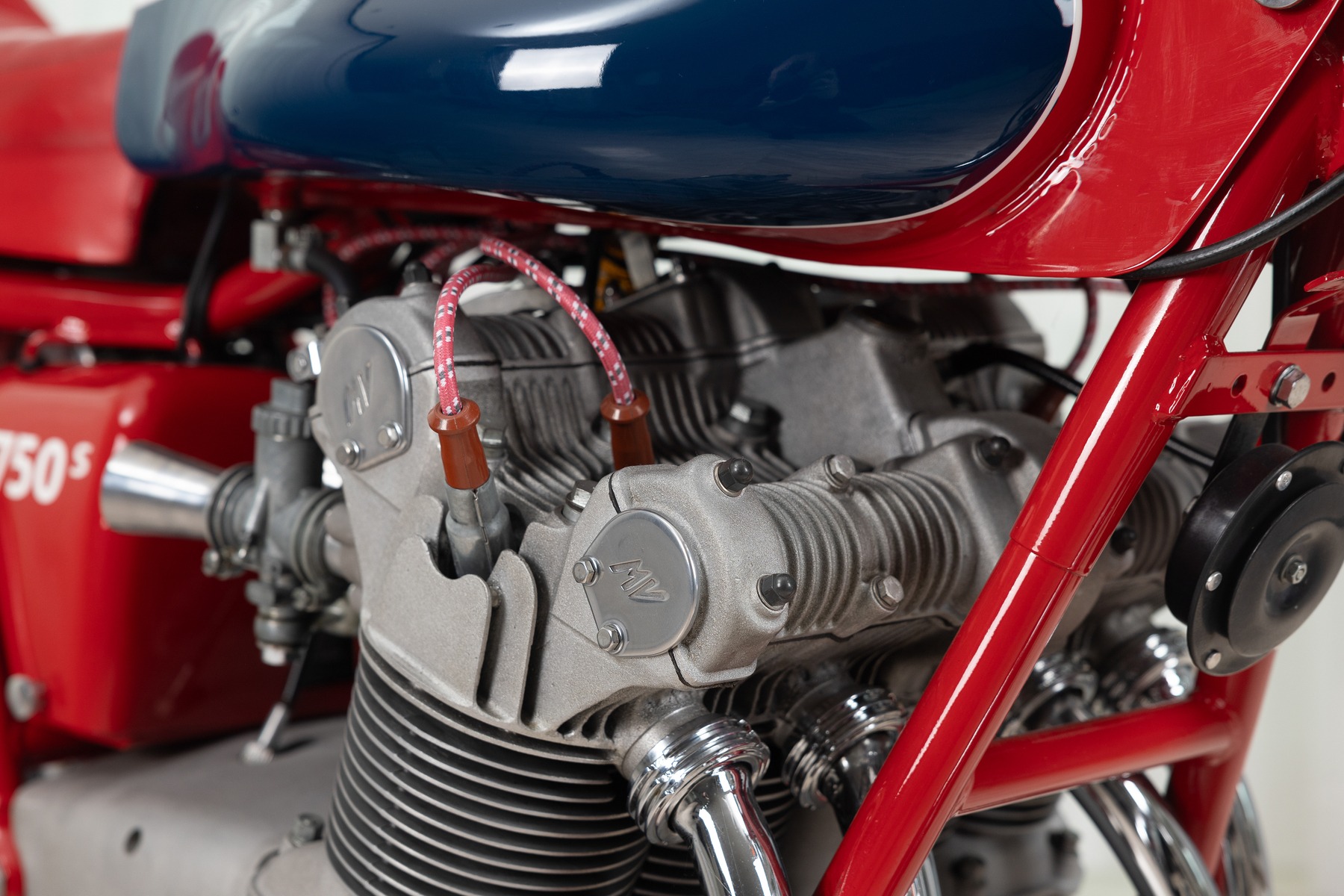
MV Agusta’s factory was not set up as a mass-production facility but instead each motorcycle was hand built, making the labour costs much higher. The purchase price for the 750 S was set at top-shelf level and likely to cause your signature on the purchase cheque to become smudged by the tears escaping from your eyeballs.
However, on the plus side, these bikes have tended to maintain their value and they command substantial prices on the collector market nowadays.
One of these highly desirable machines is coming up for sale at time of writing. The sale is being done by RM Sotheby’s on July 27, 2024 at their The Tegernsee Auction, to be held at Gut Kaltenbrunn, Kaltenbrunn 1, 83703 Gmund am Tegernsee, Germany.
You will find the sale page for this motorcycle if you click here.
Picture Credits: All pictures of the sale MV Agusta 750 S courtesy Peter Singhof @ RM Sotheby’s. All other pictures as individually credited.

Jon Branch is the founder and senior editor of Revivaler and has written a significant number of articles for various publications including official Buying Guides for eBay, classic car articles for Hagerty, magazine articles for both the Australian Shooters Journal and the Australian Shooter, and he’s a long time contributor to Silodrome.
Jon has done radio, television, magazine and newspaper interviews on various issues, and has traveled extensively, having lived in Britain, Australia, China and Hong Kong. His travels have taken him to Indonesia, Israel, Italy, Japan and a number of other countries. He has studied the Japanese sword arts and has a long history of involvement in the shooting sports, which has included authoring submissions to government on various firearms related issues and assisting in the design and establishment of shooting ranges.

